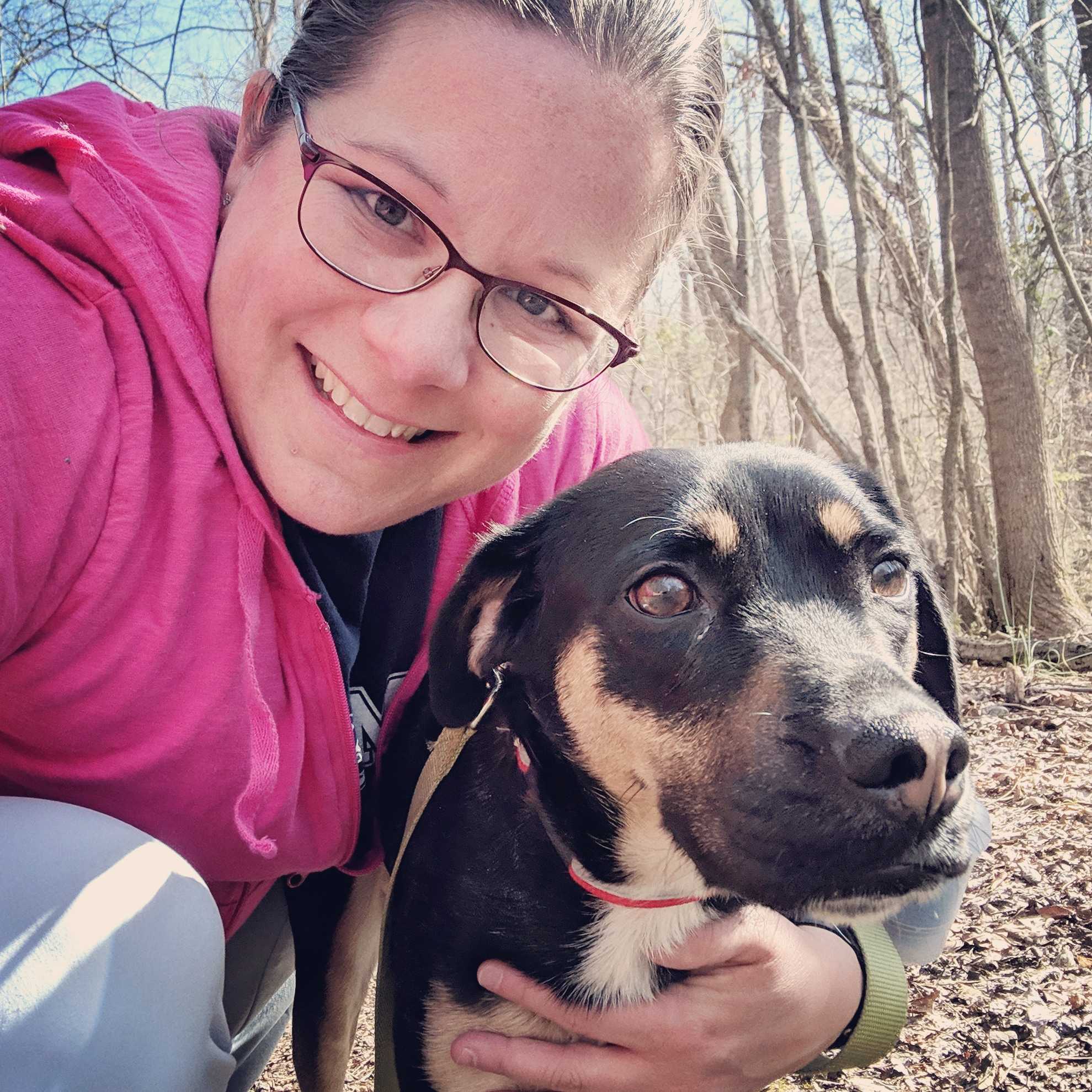10 guinea pig breeds: Which is best for you?
Wondering which guinea pig breed is the best choice? Check out this list of 10 different breeds to find out
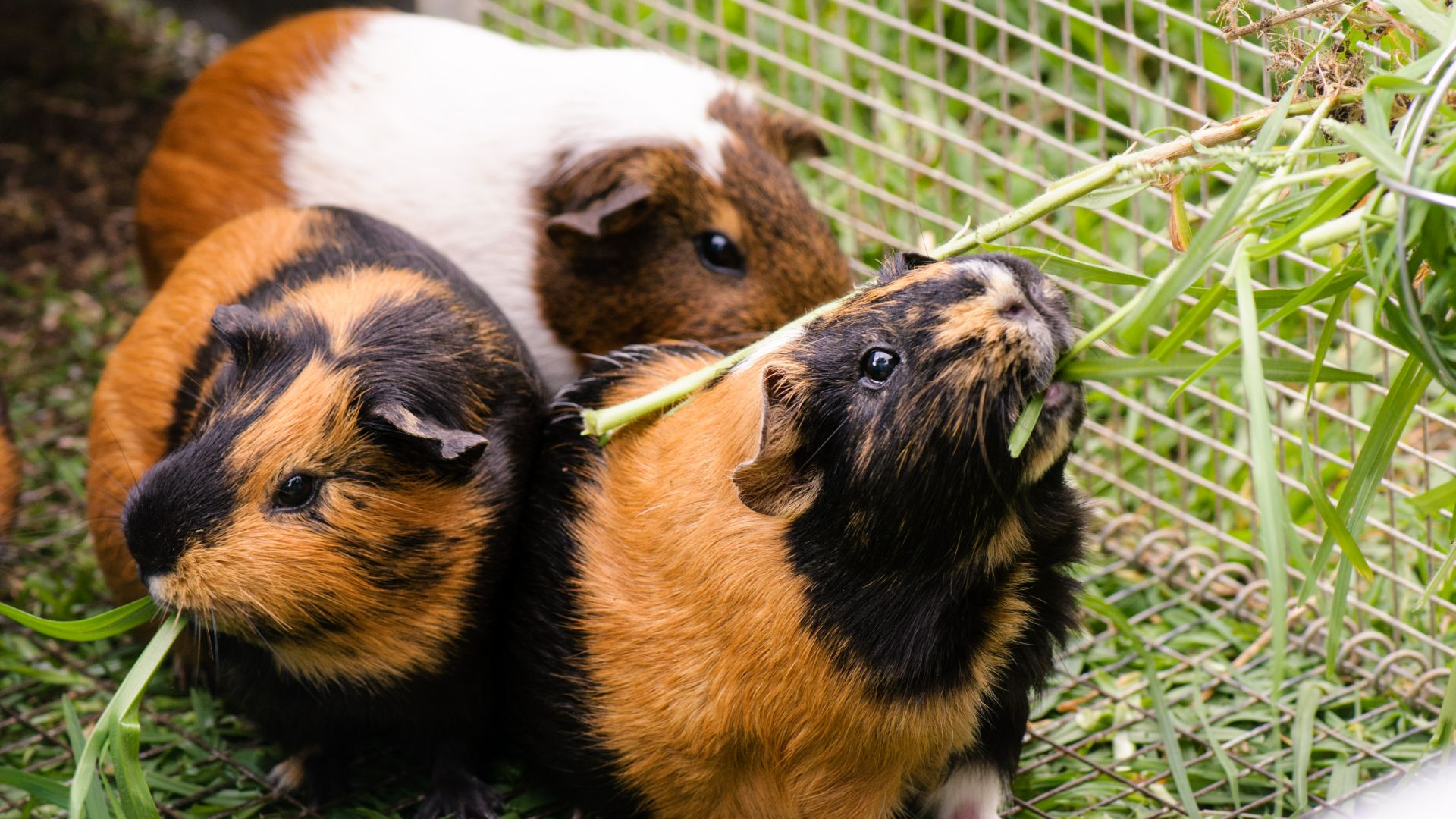
When it comes to different guinea pig breeds, there are more breeds than you may have thought. We’ve covered 10 different breeds in this feature to help you narrow down which is the best option for you.
There are endless reasons to get a guinea pig, but in case you need a few more, guinea pigs are small, compact pets who are fun and affectionate. One of the things to know before you adopt a guinea pig is the type of breed that it is.
You’ll be happy to know that no matter which breed you choose, most guinea pigs are generally low-maintenance pets, although they do need some of the best guinea pig accessories to stay busy. Each different type of guinea pig will have their own traits and characteristics that you need to cater to keep them happy, healthy, and thriving. Now let’s check out the different breeds.
Best guinea pig breeds
1. American/English guinea pig
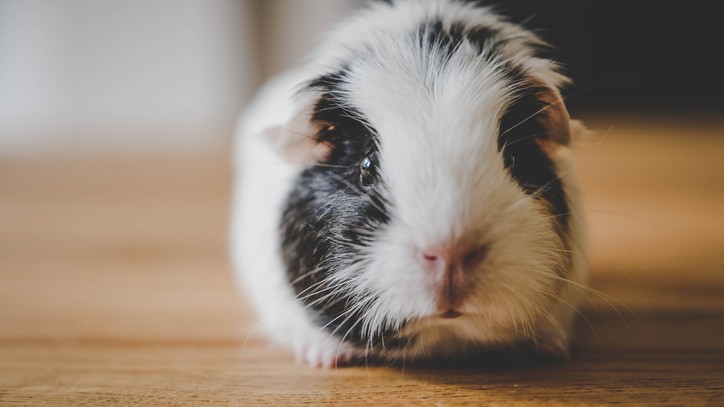
Pros:
• Friendly, laid-back, and easy to care for
• Often available in pet stores
Cons:
• Laid-back personalities may make them less of a challenge for advanced owners
The American guinea pig is the oldest and most well-known guinea pig breed. If you have seen guinea pigs for sale in a US pet store, they likely were American guinea pigs. If you were to see them for sale outside of the US, however, they would be referred to as English guinea pigs! These guinea pigs actually originated in South America, then became pets in Europe before reaching the United States.
American/English guinea pigs are known for their laid-back, easygoing personalities. Individual variation always exists, but this species does not tend to be as high-strung as some other breeds, especially if socialized appropriately from a young age. Because of their laid-back nature, they are considered to be a good fit for children and first-time guinea pig owners. If you are looking for a guinea pig that you can cuddle and handle regularly, the American/English guinea pig may be a great option.
Get the best advice, tips and top tech for your beloved Pets
American/English guinea pigs tend to be relatively small, ranging in length from 8-9 inches. Their weight typically averages 1.5-2.5 pounds, with males being larger than females.
2. Abyssinian guinea pig
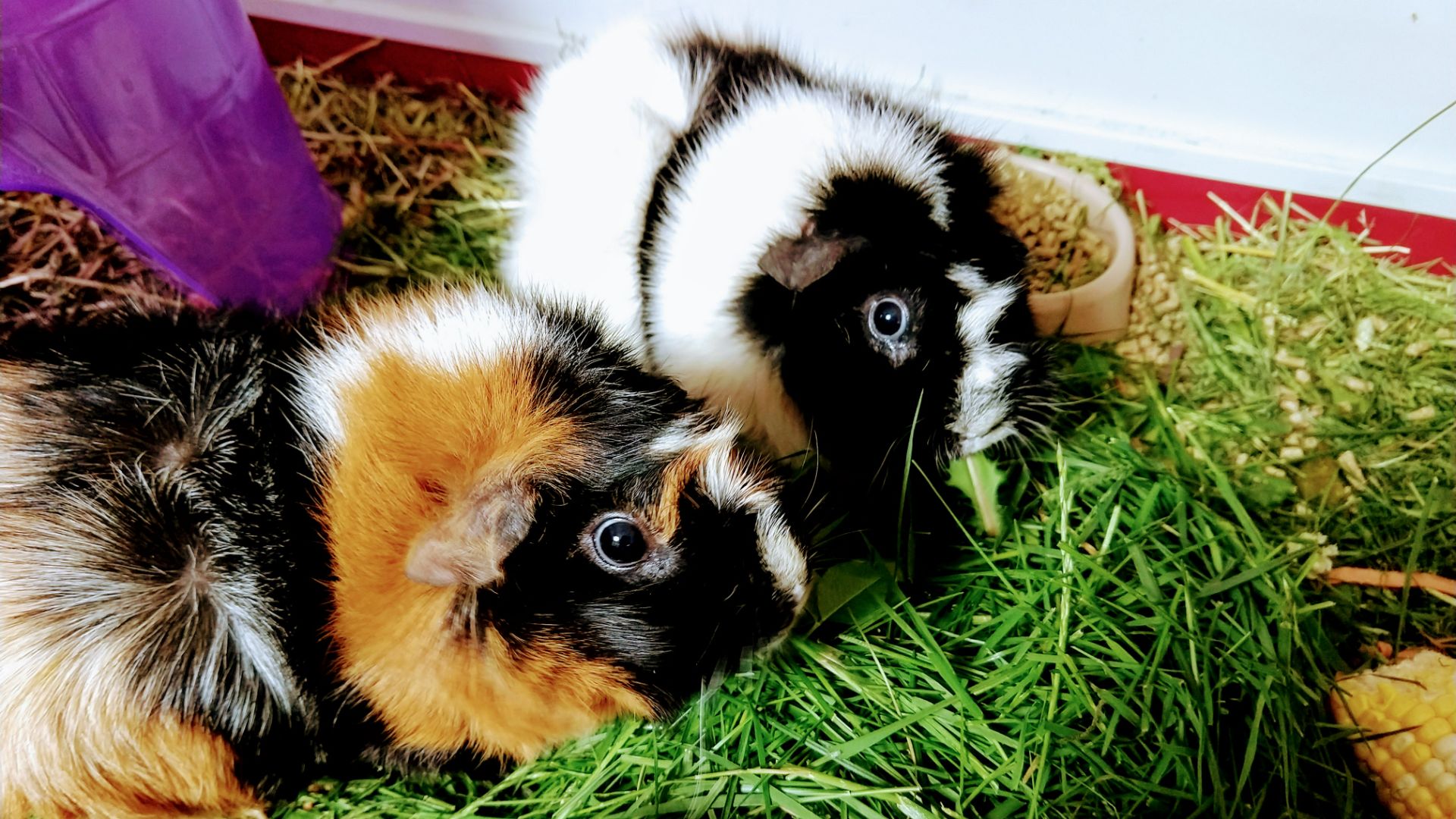
Pros:
• Friendly, affectionate, and eager to learn
• Eye-catching coat
• Easily available
Cons:
• High-energy breed, requires frequent interaction
• Coat requires brushing to avoid tangles
Abyssinian guinea pigs are popular as both pets and show animals. Like American/English guinea pigs, Abyssinians are one of the earliest guinea pig species. Although their name suggests they are from Abyssinia (Ethiopia), they actually originated in South America. Like American/English guinea pigs, Abyssinians are commonly available in pet stores.
Abyssinian guinea pigs have a distinct appearance, due to the presence of rosettes (swirls or cowlicks) in their fur. In the show ring, the number of rosettes is a large determinant of how well a guinea pig will show. Abyssinians that show successfully often have at least 8-10 rosettes.
Compared to laid-back American/English guinea pigs, Abyssinians are considered a high-energy breed. This can be both an advantage and a disadvantage! If you’re looking for a guinea pig who will thrive with regular attention and training, an Abyssinian may be a great choice. If, on the other hand, you’re looking for a calm, cuddly guinea pig, an Abyssinian may not be the best option.
Overall, Abyssinians are considered to be a reasonable choice for children and first-time guinea pig owners. They are relatively large guinea pigs, with their adult size reaching up to 12 inches in length. They typically weigh 2.5-3.5 pounds when fully grown.
3. Skinny pig
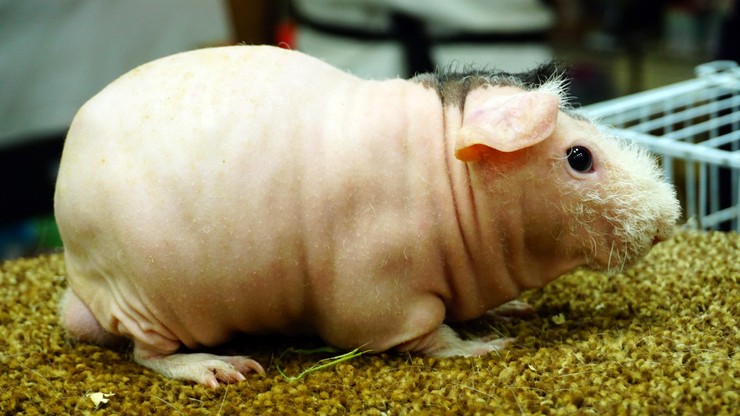
Pros:
• Unique appearance
• No grooming required
• Good for owners with allergies
Cons:
• Must remain indoors
• Increased nutritional requirements
• High purchase price
Skinny pigs are known for their unusual appearance. They have a small amount of hair on their muzzle, feet, and legs, with the rest of their bodies largely hairless. Hairless guinea pigs were initially developed for laboratory research in the 1980s, although they were unsuitable for use as pets at that time. After several generations of breeding with traditional, haired guinea pigs, the sturdier, pet-appropriate Skinny pig breed was developed and introduced as pets in the US in the 1990s. Because Skinny pigs are uncommon, these guinea pigs may be difficult to find and may cost $100-200.
While their lack of hair is adorable, it also affects the care these guinea pigs require. Skinny pigs must be kept indoors because their lack of hair means they have no protection from cold temperatures or sunburn. Additionally, Skinny pigs eat more than other guinea pigs, because fast metabolism is required for them to stay sufficiently warm. Finally, they need to be handled carefully, because their unprotected skin is more prone to abrasions than other guinea pigs.
Skinny pigs range in size from 8-12 inches, with typical weights ranging from 1-2 pounds.
4. Teddy guinea pig
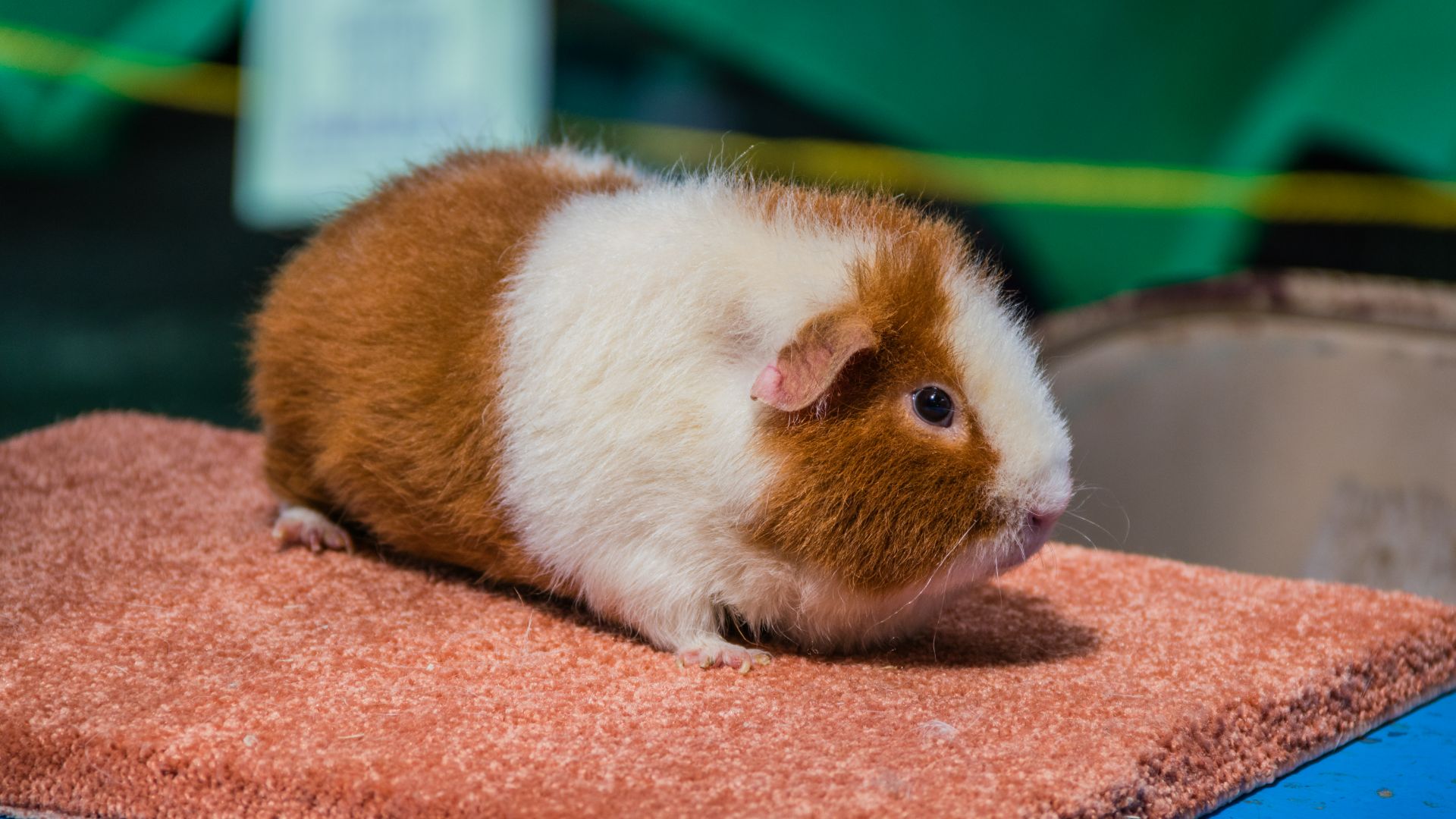
Pros:
• Distinctive appearance with a cute, wiry coat
• Calm and cuddly personality
Cons:
• Prone to dry skin, especially with overbathing
Teddy guinea pigs get their name from their appearance, which resembles a teddy bear. They have thick, wiry hair that sticks out from the body, instead of lying flat and smooth against the skin. They also have a wider, larger nose than other breeds, which contributes to their unique appearance. Teddy guinea pigs are relatively common and can be obtained from pet stores, breeders, and rescue groups.
Teddy guinea pigs are known for being calm and friendly. Many Teddy guinea pigs are very tolerant of handling and may even enjoy cuddling with their owners. This makes them a good option for children or first-time guinea pig owners. Their short coat requires minimal grooming, making them a relatively low-maintenance guinea pig breed. Their skin is prone to dryness, so frequent bathing is a problem for this breed.
Teddy guinea pigs are relatively small, averaging 1.5-3 pounds when fully grown.
5. Peruvian guinea pig
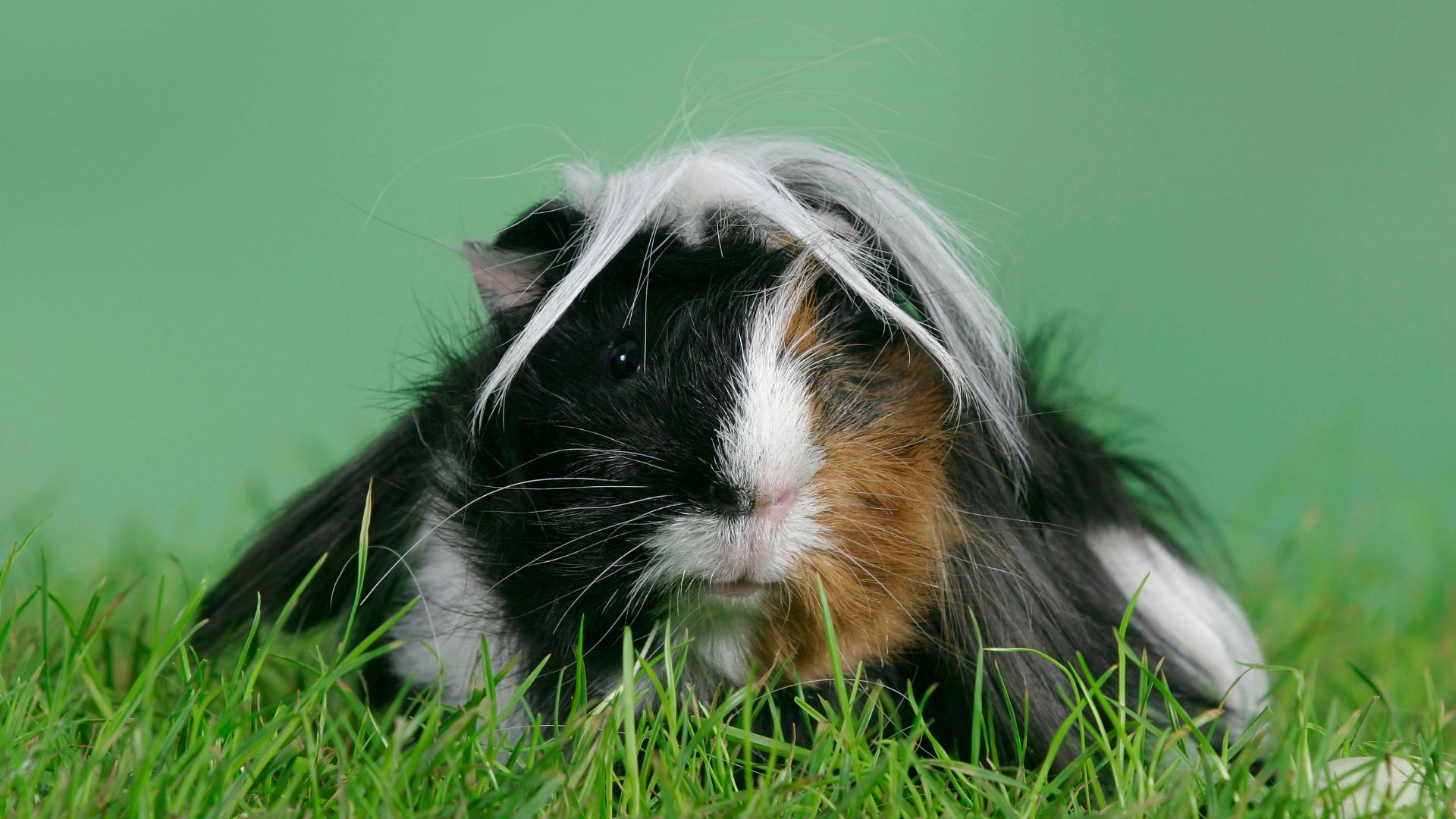
Pros:
• Long, smooth, coat can grow to be very long
• Friendly and curious
Cons:
• Requires extensive grooming, including both brushing and trimming
Peruvian guinea pigs can be identified by their incredibly long hair. If left without grooming, their hair will become so long that it can be difficult to distinguish which end of the guinea pig is its head! This breed has a friendly temperament and enjoys human interaction.
The gorgeous coat of a Peruvian guinea pig, however, is very high-maintenance. Peruvian guinea pigs have long, silky hair, similar to humans. Like humans, their hair requires daily brushing to keep tangles to a manageable level. If the hair becomes matted, it can become painful for your guinea pig and contribute to skin infections.
In addition to brushing, the hair of Peruvian guinea pigs must be regularly trimmed, to keep it from becoming so long that it hinders the guinea pig’s movement. While you may see some show Peruvians with incredibly long hair, these guinea pigs must have their hair pinned up and wrapped for protection between shows; this is not practical for a typical pet guinea pig.
6. Alpaca guinea pig
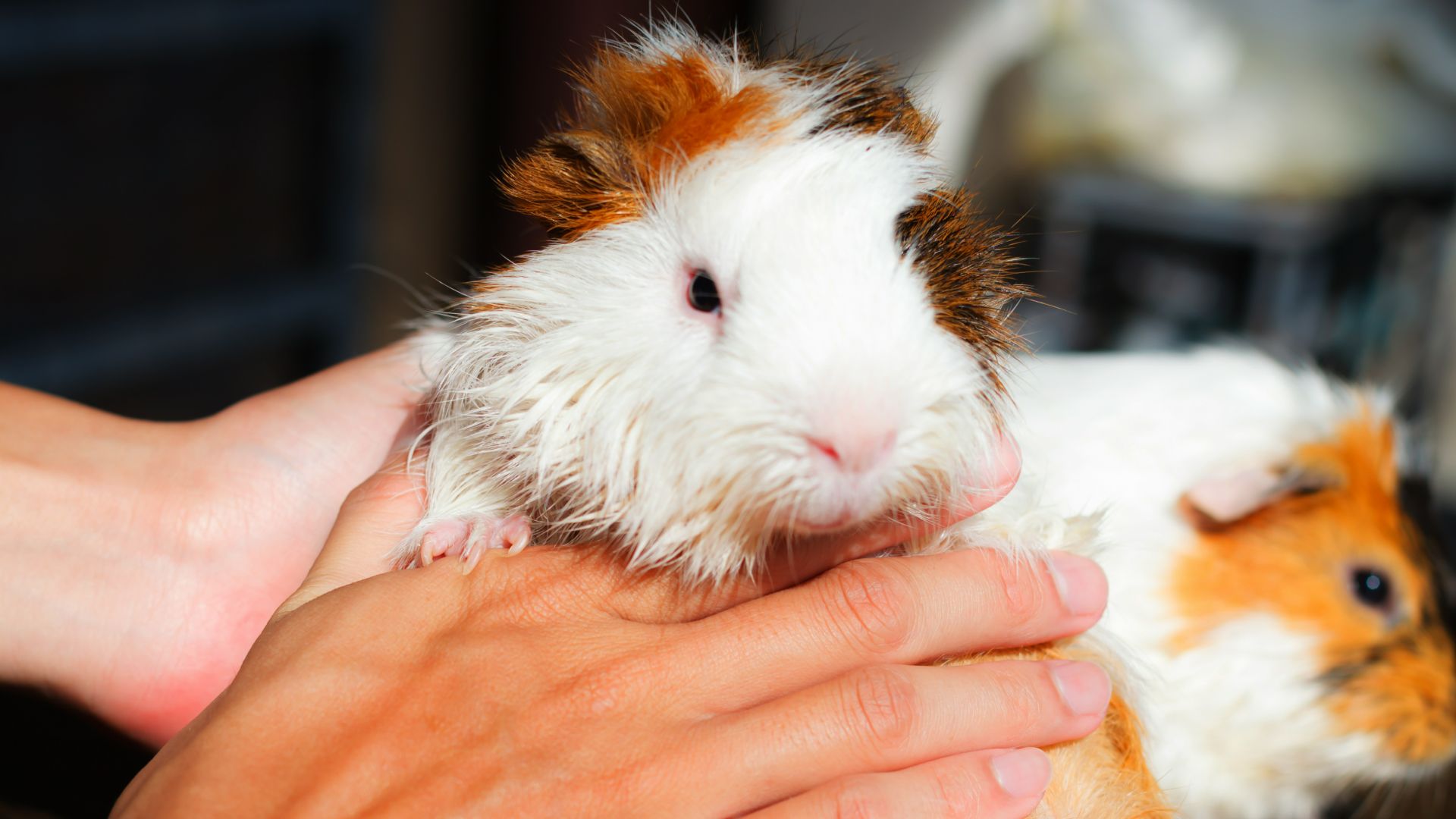
Pros:
• Sweet and affectionate
• Enjoys human company
• Distinctive coat
Cons:
• More expensive than other breeds
• Prone to overheating
• Requires daily grooming
Alpaca guinea pigs have coarse, wavy, long hair that is similar to an alpaca. While their coat is very attractive, it comes at a cost: daily grooming is required to prevent tangles. Additionally, these guinea pigs occasionally require trimming of their coat. This makes them relatively high-maintenance, compared to some other breeds. However, many guinea pig owners find the increased effort to be worthwhile, thanks to the sweet temperament and distinctive appearance of this breed.
Although Alpacas are a relatively new breed, their unique appearance has created a high demand. They may be more expensive than other breeds, because they are less commonly available in typical pet stores.
Alpaca guinea pigs are highly social. Like other breeds, they do best when housed with another guinea pig. They also enjoy human attention and have a reputation for being warm and affectionate. Thanks to this love of human attention and their warm fur (which can make them prone to overheating), Alpaca guinea pigs must be housed indoors.
7. Silkie guinea pig
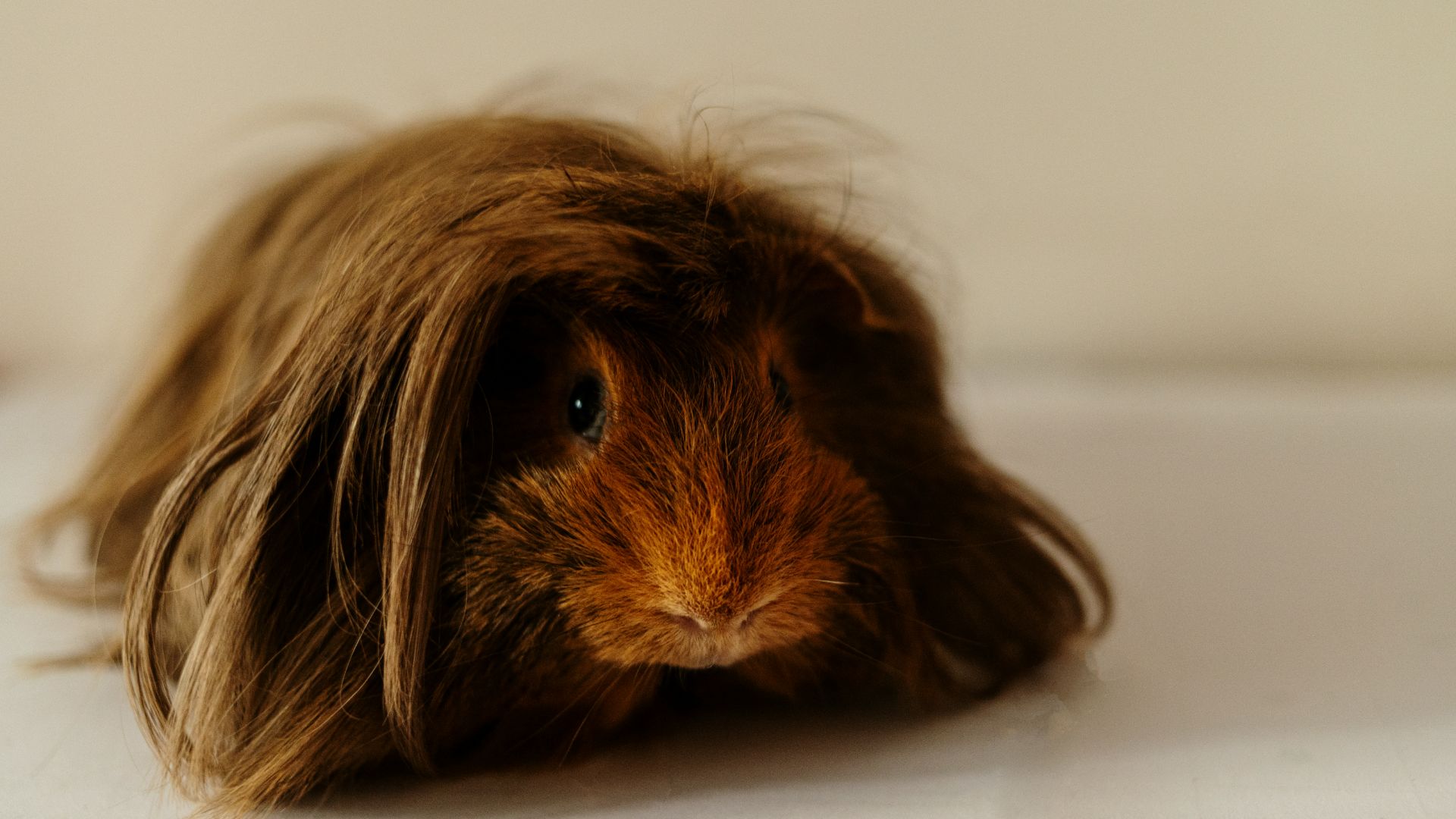
Pros:
• Calm, gentle, laid-back personality
• Good with children
• Enjoys human affection
• Long, flowing coat
Cons:
• Requires daily brushing and grooming
• Hair can grow up to 24 inches long
This breed originated in the 1970s (as a relative of Peruvian guinea pigs) and has gradually increased in popularity. Not only are Silkies known for their soft and silky coats (hence their breed name), they are often regarded as the most calm and laid-back breed of guinea pigs.
Due to their calm personality, Silkies can be a great choice for a child’s pet (as long as the child is old enough to safely and calmly handle a guinea pig). However, Silkies do require daily grooming of their long coat, so there will need to be an adult or older child in the home who is willing to take on that responsibility.
You may also hear Silkie guinea pigs referred to as Shelties, in some settings.
8. White crested guinea pig
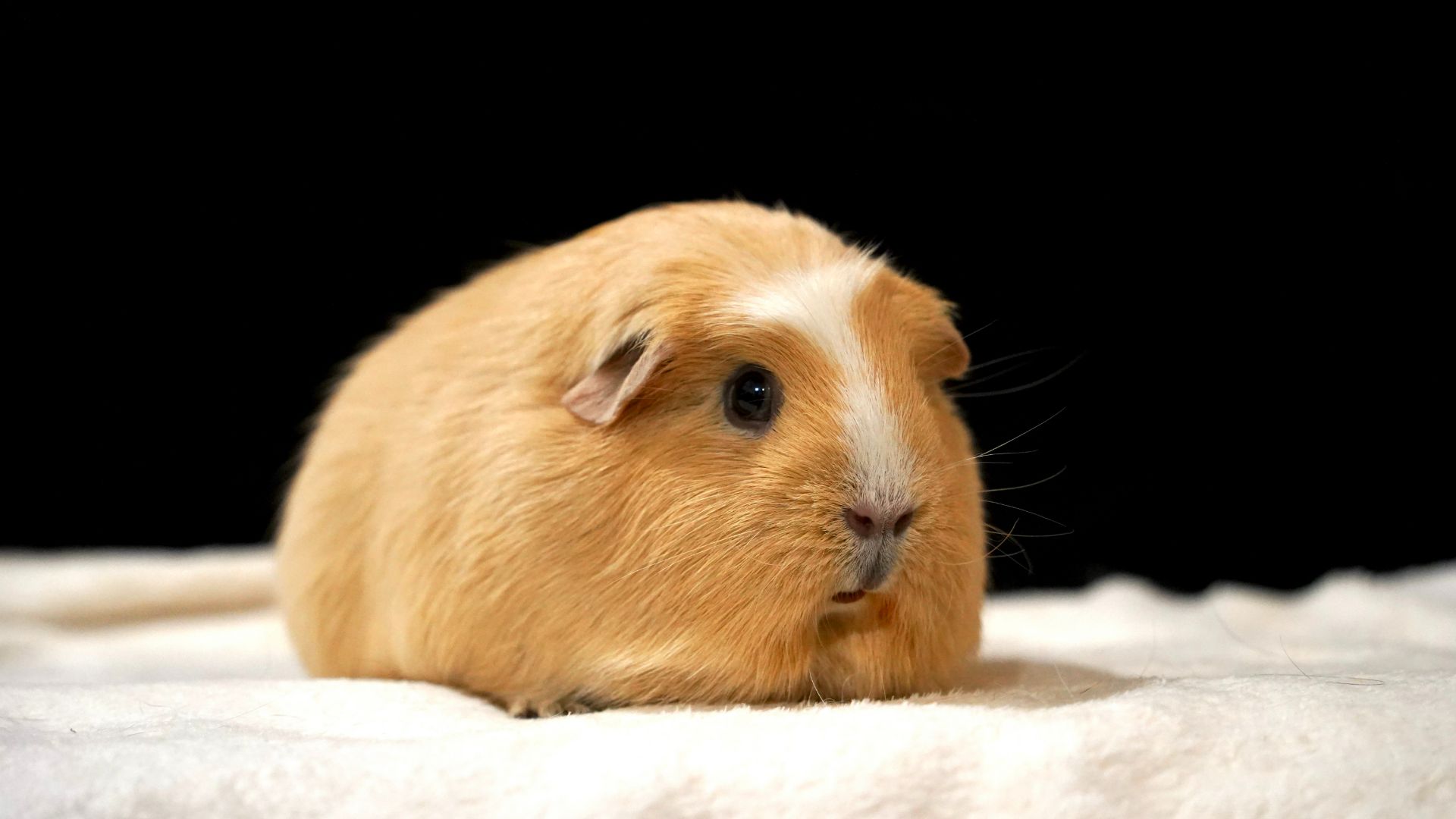
Pros:
•Distinct face marking
•Easy to care for
•Friendly demeanor
Cons:
•Rare breed - can be hard to find
White-crested guinea pigs are a unique and rare breed. The white crest on their face that sets them apart from other crested breeds. How long do guinea pigs live? This breed can live between five to seven years.
White-crested guinea pigs have short coats that require minimal grooming making them a great option for first-time guinea pig owners. This breed can be a bit shy, but with the right amount of love and care, they can be very affectionate and loving pets. You’ll want to start off with slow and gentle movements to help build their trust. They are social pets and will love the companionship of having another guinea pig friend.
9. Rex guinea pigs
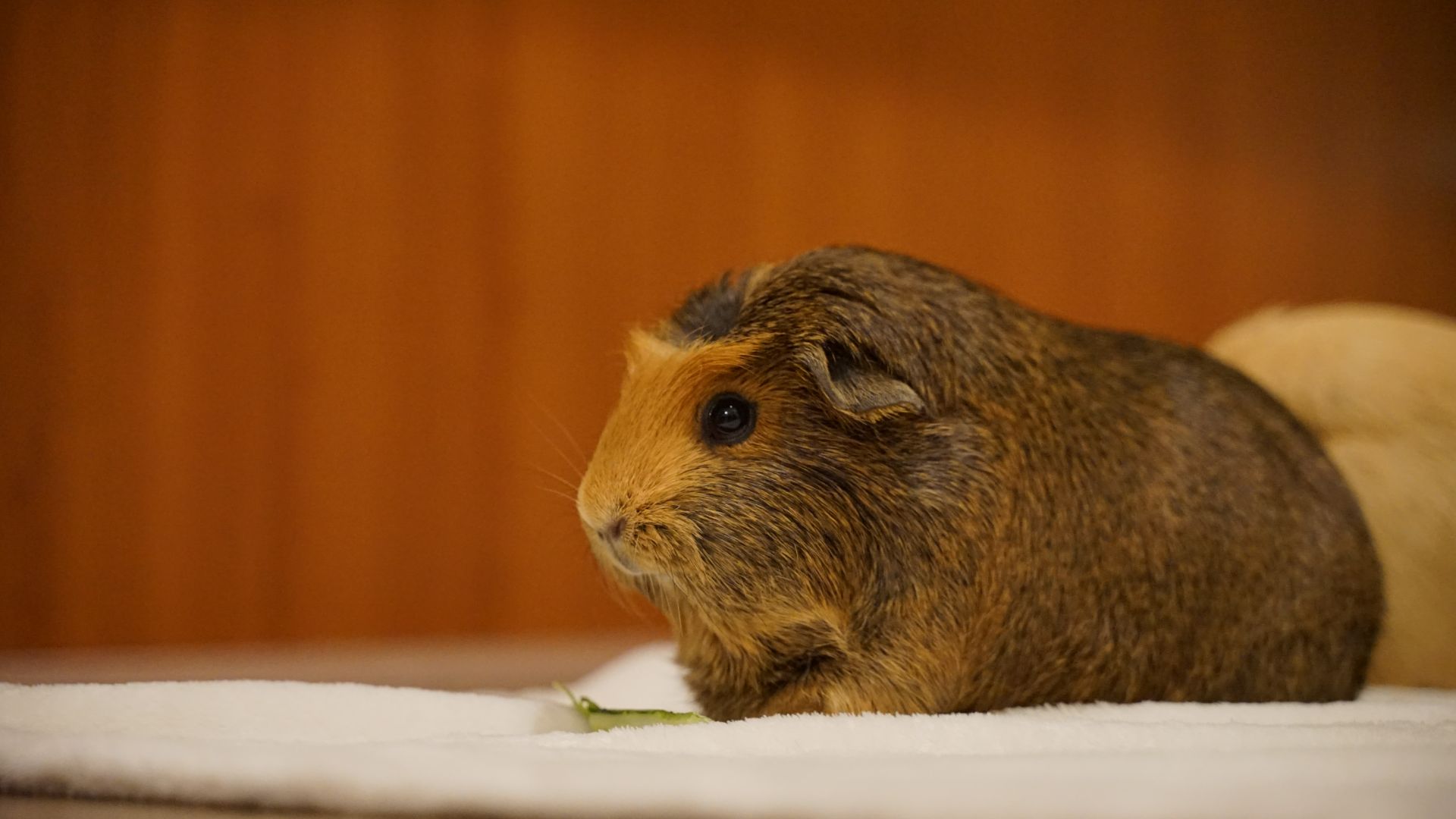
Pros:
•Short, curly fur
•Very intelligent
Cons:
•Can be very sensitive to temperature changes
•Very vocal
You should be aware that this is one of the largest guinea pig breeds. Weighing in at two to three and a half pounds and can reach up to 17in in length. Perhaps due to their length, they are also great jumpers!
Rex guinea pigs are known for their distinctive curly coats and floppy ears. This breed of guinea pig comes in a variety of colors and is very affectionate and friendly. These guinea pigs are quite social creatures and will do well living with other guinea pigs.
While they do have short coats, they still require regular grooming to prevent their fur from getting tangled. The rex guinea pigs are a very intelligent breed, they can be taught a few simple tricks and can even recognize their owners. They are also quite vocal with purrs and ‘wheeks’ when they are excited.
10. Texel guinea pigs
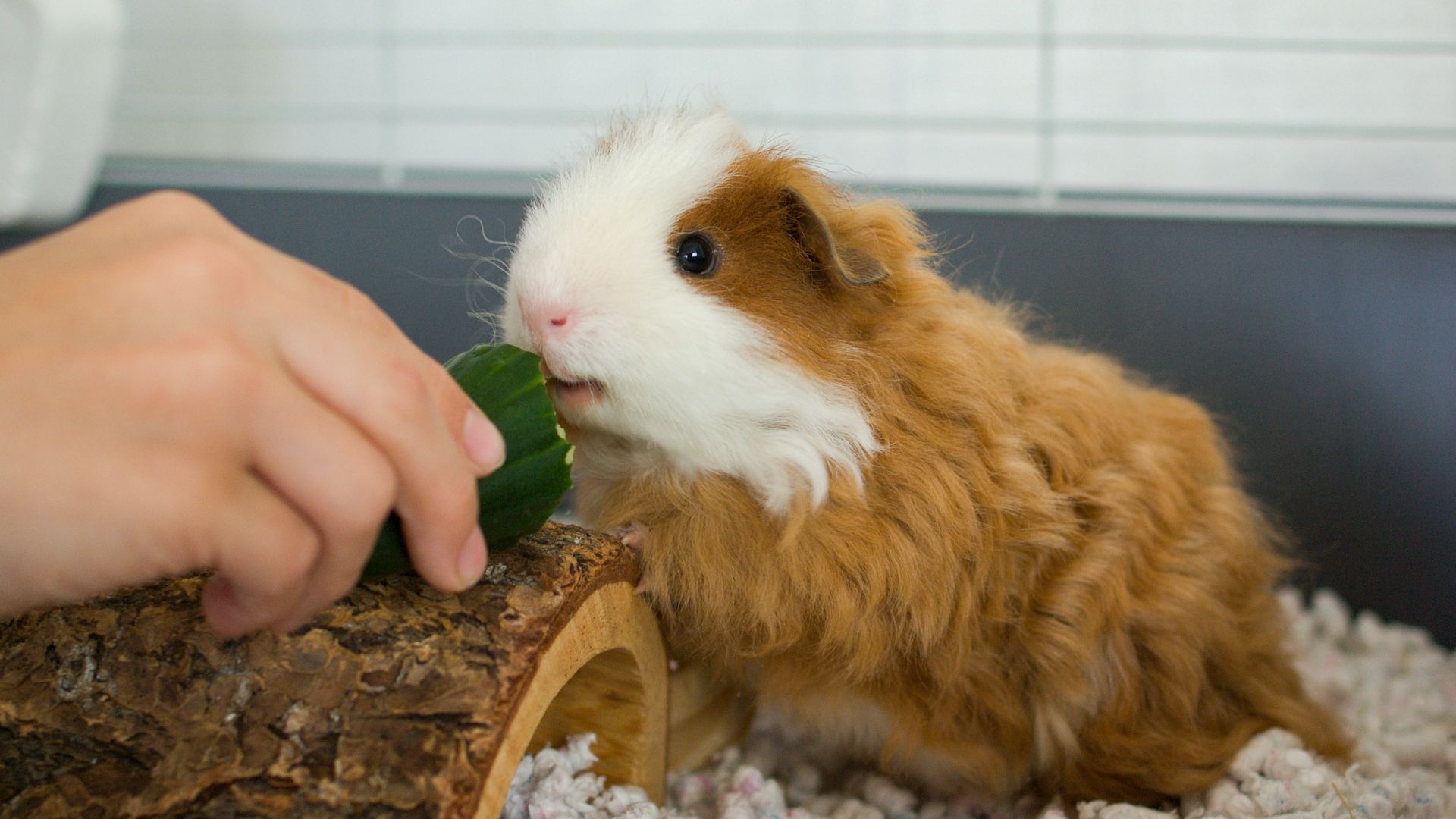
Pros:
•Curly coats
•Very social
Cons:
•Their thick coat can trap dirt
Texel guinea pigs are known as the Shirley Temple of guinea pigs due to their long, curly coats. Unlike other curly-haired guinea pigs, this breed has a long, dense coat. As their coat is so thick, it can easily collect dirt and urine. You’ll want to ensure that you are brushing them regularly and trimming the hair regularly to keep them looking and feeling their best.
Like other cavy breeds, the texel guinea pig is very social and does well living with other guinea pigs. They are more of a shy breed so require a little time when warming up to a new owner. Once you’ve made the connection, however, this guinea pig will love being held and played with.
How to choose a guinea pig breed
If you are looking to add a guinea pig to your home, resist the temptation to purchase the first adorable face you see in a pet store! Take your time to research guinea pig breeds, to determine the breed that will be the best fit for you and your family.
Check out 32 things guinea pigs cannot eat for even more guinea pig information.
Dr. Barnette is a graduate of the University of Florida, where she received both her B.S. in Zoology and her Doctor of Veterinary Medicine (DVM). She has 15 years of clinical experience as a small animal veterinarian, treating dogs, cats, and occasional exotic patients. She now works as a freelance veterinary writer, creating educational content for veterinarians, veterinary team members, and dedicated pet owners. Dr. Barnette lives in southwest Florida with her husband and daughter (plus two cats, a dog, and a rescued dove!) and enjoys kayaking, biking, and hiking. Learn more about Dr. Barnette at www.linkedin.com/in/catherinebarnette.
- Alexis De LeaverDigital & Syndication Staff Writer
